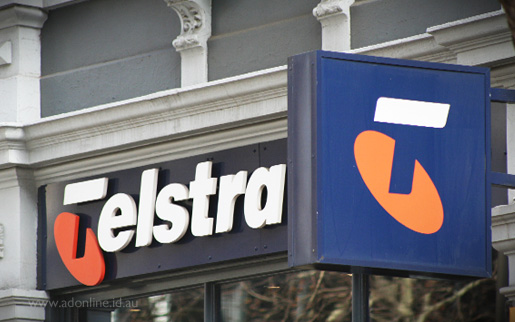Telstra privatisation
Is the privatisation of Telstra the right choice?
The Prime Minister announced yesterday that the Commonwealth Government would be selling its remaining share in Telstra. The government will sell around $8 billion worth of its stock in October this year, whilst the remaining shares will be transferred to the Future Fund for a later sale.

I believe this decision is against the national interest.
The problem all starts with the proverbial “tyranny of distanc”. Australia has a population of 20 million spread across a landmass the size of the USA. Providing telecommunications for sparse rural populations is unprofitable because the cost of infrastructure vastly outweighs revenue. In the past, government-owned Telstra paid for rural infrastructure with the profits it made in city markets. More recently, a Univeral Service Obligation was imposed on the partially-privatised Telstra to protect these unprofitable services.
That was fine whilst the government was the majority shareholder and could run Telstra as it saw fit. But if Telstra is fully privatised, then the government surely relinquishes control as well as ownership? And in an open marketplace where the other telcos are allowed to pick-and-choose which regional markets they want to trade in, there is a compelling argument that says that a USO is an unreasonable imposition for one company to take.
Of course, the removal of the USO would be devastating for many rural communities, and so it makes one question whether privatisation is really a good decision after all. Surely if the government wants these services to be provided, it should pay for them? Or just run the company as it always has. After all, there was a reason why Telstra was government-owned in the first place.
Telstra owns most of Australia’s telecommunications infrastructure, which is a legacy from its monopoly days. The price Telstra charges to rivals for use of its network is regulated to ensure competition is promoted. Whilst this may be good social policy, I don’t believe it is fair to ask this of a privatised company. The government is effectively asking Telstra to subsidise its rivals.
It has been suggested many times that Telstra should be split into a retail company and an infrastructure authority, the latter managed by the government. The government-owned authority could charge all the telcos (including Telstra) for use of the network, and in turn provide a universal service. Such a system could be easily operated on a commercial basis at no expense to the taxpayer, and would ensure that critical upgrades were made to the system. The retail part of Telstra could then be privatised, if so desired.
Telstra management has been complaining bitterly about the cost of regulation on its profits. On 4 August, Telstra announced that it was pulling out of a planned $4 billion programme to install a nationwide fibre-to-the-node broadband network. Apparently, an agreement could not be reached between Telstra and the competition regulator about the price Telstra was allowed to charge its retail and wholesale users for use of the new network. So Telstra decided to abandon the plan altogether and for now Australia misses out.
As reported in The Age recently, a World Bank study showed that Australia’s average ADSL speed of barely 1 Mbps is one of the slowest in the world. By comparison, the average in Britain is 13 Mbps, 8.4 Mbps is standard in France and 6.8 Mbps typical in Canada. The Australian Internet Industry Association believes that 80% of Australians will need to have access to 10 Mbps+ broadband by 2010 for the nation to remain competitive.
Broadband is today what the railways were 150 years ago – a vital piece of infrastructure critical to the development of the nation. And whilst that infrastructure can be privately provided, it is sometimes in the national interest for the government to take the lead and make it happen. In the case of broadband, this means replacing the copper network with fibre-optic to enable high-speed internet connections for all Australians. For reasons of economic advancement, industry competition and equity of access, this network should be installed and paid for by a government-owned authority, if not Telstra. A privately-owned Telstra will only build the network if it can charge what it likes (and therefore wedge out competition). And if Telstra won’t build it, no-one else will.
For all these reasons, Telstra should remain in majority government ownership and control. Ideally, the Commonwealth Government, through Telstra, would orchestrate a share-buyback that would amount to a re-nationalisation of the company. Realistically, this is not going to happen.
So there are two options for the government at present: either sell its 51.8% share or retain it. From a purely financial standpoint, selling the shares is a mistake. Telstra shares peaked at $9.50 in 1999. Now they are worth about $3.50 a share, and are apparently still losing value. With the shares being so cheap, does a sale now represent a good return to taxpayers? Arguably not.
To ensure that rural services are maintained, broadband services are improved and competition in the telecommunications sector continues, Telstra should remain in majority government-ownership and split. A government-owned Telstra could be used as a tool for growing the nation, just as it was in the past.
Comments
No comments have yet been submitted. Be the first!